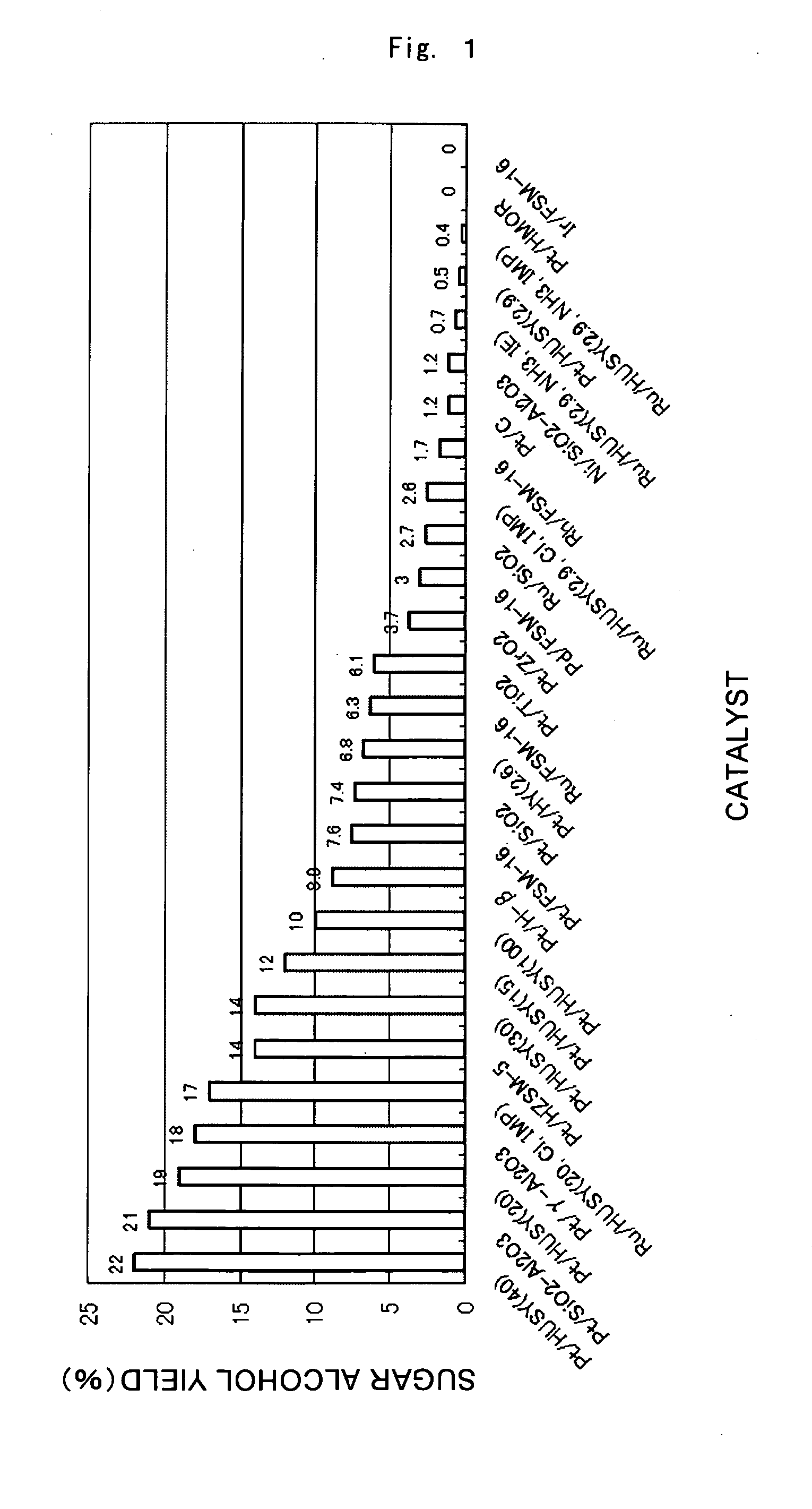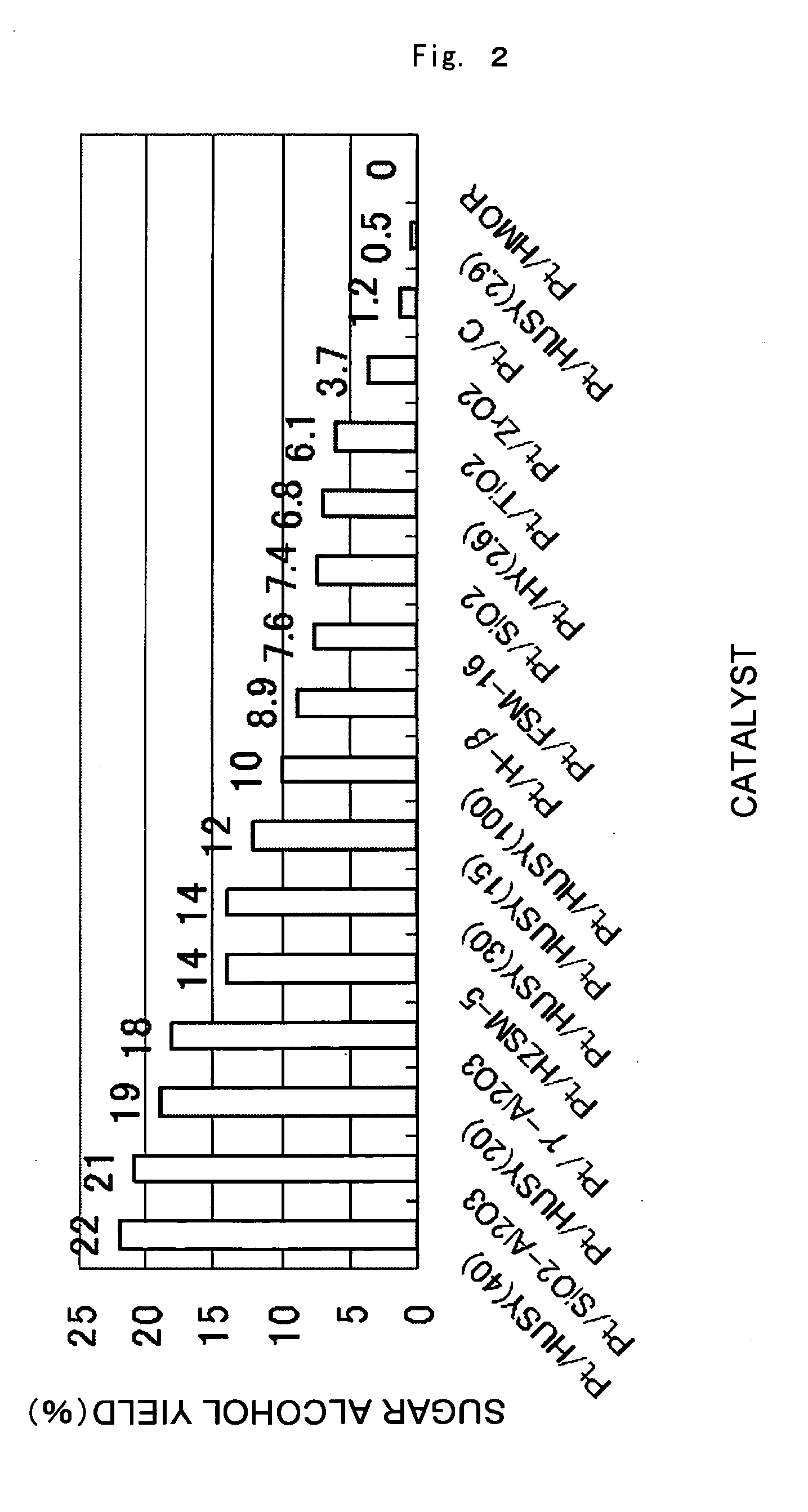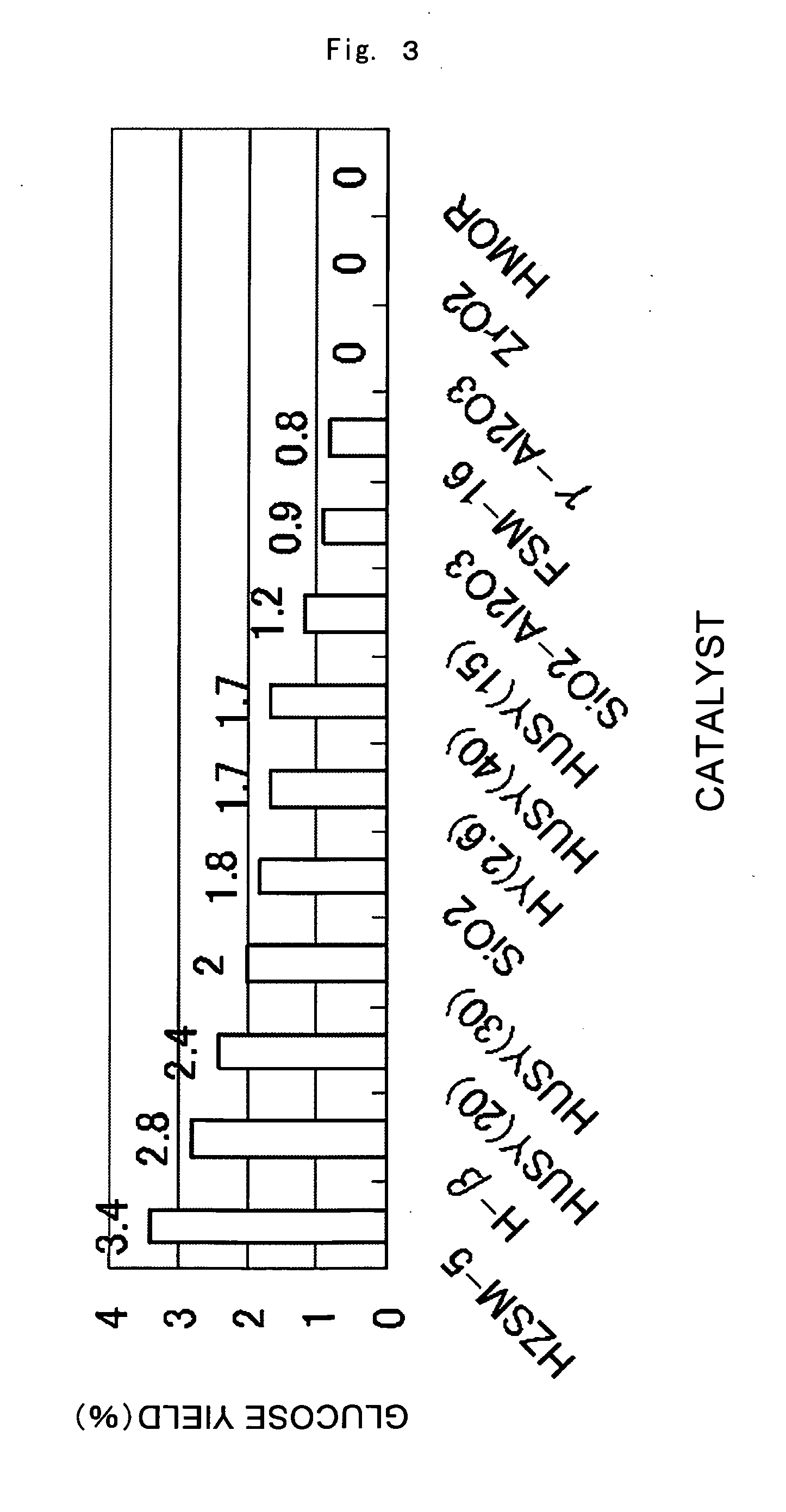Catalyst for Cellulose Hydrolysis and/or Reduction of Cellulose Hydrolysis Products and Method of Producing Sugar Alcohols From Cellulose
a technology of cellulose hydrolysis and catalyst, which is applied in the direction of physical/chemical process catalyst, metal/metal-oxide/metal-hydroxide catalyst, sustainable manufacturing/processing, etc., can solve the problems of low reaction rate, inability to convert cellulose to chemically useful products, and virtually untapped resources. , to achieve the effect of increasing the glass transition point and achieving greater hydrogen and alkane selectivity
- Summary
- Abstract
- Description
- Claims
- Application Information
AI Technical Summary
Problems solved by technology
Method used
Image
Examples
embodiment 1
1.1 Preparation of Catalysts
[0052]Catalyst supports in the form of amorphous silica (denoted as SiO2 hereinafter: CARIACT Q-10 made by Fuji Silysia Chemical, Ltd.), mesoporous silica (FSM-16, prepared in-house (S. Inagaki, et al., J. Chem. Soc., Chem. Commun., 680 (1993))), gamma-alumina (gamma-Al2O3, made by Nishio K. K. A-11), titania (TiO2, Merck, Inc.), zirconia (ZrO2, Wako Pure Chemical Industries, Ltd.), silica-alumina (SiO2—Al2O3, Sigma-Aldrich Japan K.K. grade 135), HY (Zeolyst Co., CBV600, Si / Al atomic ratio of 2.6), HUSY (Zeolyst Co., CBV720 (Si / Al ratio 15), 740 (Si / Al ratio 20), 760 (Si / Al ratio 30), 780 (Si / Al ratio 40)), HUSY (Catalysts & Chemicals Ind. Co., Ltd. ZCP-2000, Si / Al ratio 100), ZSM-5 (Zeolyst Co. CBV4024E), H-beta (Catalysis Society of Japan, catalyst JRC-Z-B25(1)), HMOR (Catalysis Society reference catalyst JRC-Z-M15(1)), activated carbon (Takeda Pharmaceutical Co., Ltd. (now, Japan EnviroChemicals, Ltd.), LPM007) were employed. HUSY prepared from NaY (Un...
embodiment 2
[0058]The results of the reaction conducted under the standard conditions using the various supported metal catalysts are given in FIG. 1. In almost all cases, cellulose hydrolysis and hydrogenation proceeded catalytically and sugar alcohols were produced, with sorbitol being the primary product. For example, the yield of sugar alcohols produced with the Pt / gamma-Al2O3 catalyst was 18 percent, of which sorbitol comprised 15 percent and mannitol 3 percent. Similar product selectivity was achieved with the other catalysts. Under these reaction conditions, Pt / HUSY (40) and Pt / SiO2—Al2O3 produced sugar alcohol yields of 20 percent or higher and afforded high activity. The activity order of the metals was: Pt>Ru>Pd>Rh>Ni>Ir. For Pt, the order of activity based on supports is given in FIG. 2. The sequence was: HUSY (40), SiO2—Al2O3>HUSY (20), gamma-Al2O3>HZSM-5, HUSY (30)>HUSY (15)>HUSY (100), H-beta>FSM-16, SiO2, HY (2.6), TiO2>ZrO2>C (activated carbon), HUSY (2.9), HMOR. Activity was hi...
embodiment 3
[0060]The dependence on reaction temperature of the sugar alcohol yield by Pt / gamma-Al2O3 catalyst was examined. Except for the reaction temperature, the standard conditions were employed. As shown in FIG. 4, the sugar alcohol yield at 180° C. was 14 percent, increased to 18 percent at 190° C. However, at 200° C., the yield decreased to 16 percent. Thus, 190° C. was the optimal temperature.
PUM
| Property | Measurement | Unit |
|---|---|---|
| mass percent | aaaaa | aaaaa |
| mass ratio | aaaaa | aaaaa |
| pressure | aaaaa | aaaaa |
Abstract
Description
Claims
Application Information
 Login to View More
Login to View More - R&D
- Intellectual Property
- Life Sciences
- Materials
- Tech Scout
- Unparalleled Data Quality
- Higher Quality Content
- 60% Fewer Hallucinations
Browse by: Latest US Patents, China's latest patents, Technical Efficacy Thesaurus, Application Domain, Technology Topic, Popular Technical Reports.
© 2025 PatSnap. All rights reserved.Legal|Privacy policy|Modern Slavery Act Transparency Statement|Sitemap|About US| Contact US: help@patsnap.com



